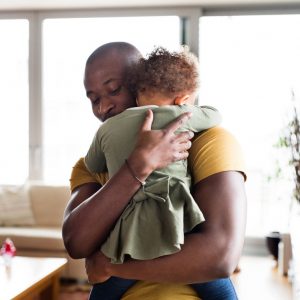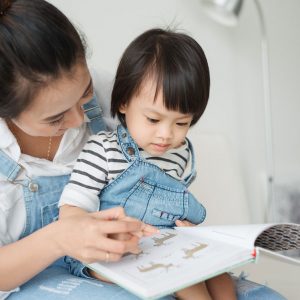Nonverbal communication: sad face, happy face, and everything in between
Your one year old may babble nonstop, but we know words are not the only way children and adults communicate. Hugs and smiles show love and happiness, while screams and kicks show anger and frustration; no words needed.
Along with their wants and needs, children communicate feelings with their nonverbal behavior.
Watch for facial expressions or body language that may indicate a certain emotion.
- If a loud noise makes your toddler burst into tears, give them a hug and say, “That was a little scary, wasn’t it? You look very upset.”
- When your toddler laughs or grins, say, “Look how happy you are today! We are in such a good mood!”
As your toddler approaches the age of two, they may respond more strongly to frustrating situations. Encourage your child to use their body appropriately and safely when trying to communicate frustrating feelings.
- Any time your child hits, kicks, bites or pushes, remind them to have “safe hands, safe feet, safe mouth” at this age. Then, offer them the feeling word that they might have been trying to express.
- For example, “You were feeling angry when your sister took that toy from you.”
How to respond to their nonverbal communication.
- Respect, recognize, and acknowledge your child’s feelings. Encourage communication with your child by helping them recognize and manage the emotions they are experiencing.
- Try not to judge, discredit, or brush off your child’s feelings as silly or stupid. Show your child that you can see they are upset and help them understand why.
- If your child can only speak one or two words, how can they tell you why they are crying? This can be frustrating. You can’t always figure out why your child is upset, but you can acknowledge their feelings. Try saying, “I know you’re feeling frustrated. I don’t like feeling that way, either.”

Hold their hand when crossing the street

Hug them when they’re scared

Sit them on your lap while you read a story before bed

Cuddle with them on the couch

Brush their hair
Let the fun begin!
Schedule play dates for your child. Being around other kids will help them practice listening, interacting, and learning from others.
- Let your child play with slightly older children, such as siblings or family friends, to support and expand their abilities.
- Allowing your child to engage in supervised, age-appropriate activities (for example, coloring, Play Doh, and dress-up) will encourage the development of communication skills (both verbal and nonverbal) and self-confidence in social settings.
